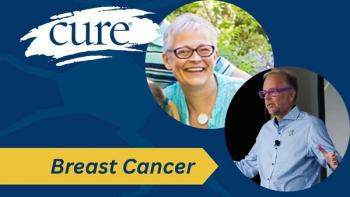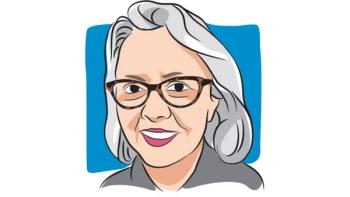
- Spring 2008
- Volume 7
- Issue 1
More Radiation in Less Time
A new approach to radiation treatment in early-stage breast cancer employs a larger dose on a shorter schedule.
The tantalizing idea of reducing radiation treatment time recently got a boost, and some researchers predict the approach may soon be offered to more women in the United States.
Radiation uses beams of high-energy X-rays to kill tumor cells and minimize recurrence in the breast. In breast cancer treatment, doctors have long worried about radiation’s potential to leave lasting injury on nearby healthy tissues, mostly the heart and lungs.
American women typically undergo treatment five days a week for around five to six weeks. Recent trials, however, have compared a different philosophy: hypofractionated radiation, which employs a larger dose on a shorter schedule. While quicker treatment sounds appealing, doctors have feared the higher doses might amplify the danger to the heart, bone, and muscle, and also lead to more scarring.
But studies have not found this to be the case. In 2002, Tim Whelan, MD, of McMaster University and Juravinski Cancer Centre in Ontario, described a randomized trial of more than 1,200 women, published in the Journal of the National Cancer Institute. Five years after treatment with a radiation schedule about half as long, women with early-stage breast cancer had results just as good as women receiving the longer schedule.
This past December, during the San Antonio Breast Cancer Symposium, Dr. Whelan and his colleagues revealed the 12-year picture from longer follow-up: The results remained practically equivalent. The risk of breast cancer recurrence at about 10 years was around 6 percent in both groups—6.7 percent with the standard schedule compared with 6.2 with the hypofractionated schedule—and the overall survival was about 84 percent in both groups.
Despite the appeal of more convenient treatment, questions remain. For example, heart problems caused by radiation—the chief long-term concern—may not emerge until 15 years after treatment or later, so some doctors believe the question of adverse effects can’t be entirely answered yet.
“It’s a very difficult problem to study,” says Abram Recht, MD, of Harvard Medical School and Beth Israel Deaconess Medical Center in Boston. Cardiovascular disease is the most common cause of death in the country, so vast numbers of women in studies are going to experience heart problems, regardless of how they receive radiation. “You’re trying to detect a small increase in a relatively large background rate,” Dr. Recht says.
Also unclear is which women would be the best candidates for hypofractionated treatment, and which should remain on the longer schedule. Patients in the Canadian trial tended to be those with the best prognoses, so whether the results apply to a larger population of women with cancer is unknown.
The majority of patients on the standard schedule get what’s called a “boost,” extra radiation in the tumor area, where the greatest chance of return exists. “The question is, can you add a boost to this fractionation scheme,” says Lori Pierce, MD, of the University of Michigan Health System. Without the data, she says, she would be wary of doing so.
Still, Dr. Pierce calls the recurrence rates in the new Canadian data “excellent.” Given the length of time patients have now been followed, she’s comfortable offering it to certain patients—for instance, those not receiving chemotherapy who live far from cancer centers and have difficulty traveling back and forth for weeks.
The data are already convincing enough that Dr. Recht has begun offering hypofractionated radiation to select patients: women with small- or medium-sized breasts who have low-grade tumors. However, like Dr. Pierce, he is wary of using the compacted schedule in women who are also receiving chemotherapy because the hypofractionated schedule hasn’t been well studied in combination with chemotherapy. And he still does not use it for treatment on the left breast, which delivers the radiation closer to the heart.
Another part of the hesitation he and his American colleagues have, Dr. Recht says, is simply overcoming decades of tradition. Radiation oncologists were taught the longer schedule, have long relied on it, and are comfortable with it.
Even if the data continue to look favorable, Dr. Recht says, a shift in clinical practice could take years to gain momentum. “It’s going to take Americans actually doing it,” he says.
Articles in this issue
over 15 years ago
Get a Second Lifeover 15 years ago
An Effective Complement to the Pap Smearover 15 years ago
HPV Vaccination Recommendationsover 15 years ago
Debt Collection: Playing Fairover 15 years ago
Bearing the Bankruptcy Burdenover 15 years ago
Debt-Fighting Strategiesover 15 years ago
Resourcesover 15 years ago
Fast Facts: John Plumb Sr.over 15 years ago
What to Watch Forabout 16 years ago
A Study of Dietary Prudence



